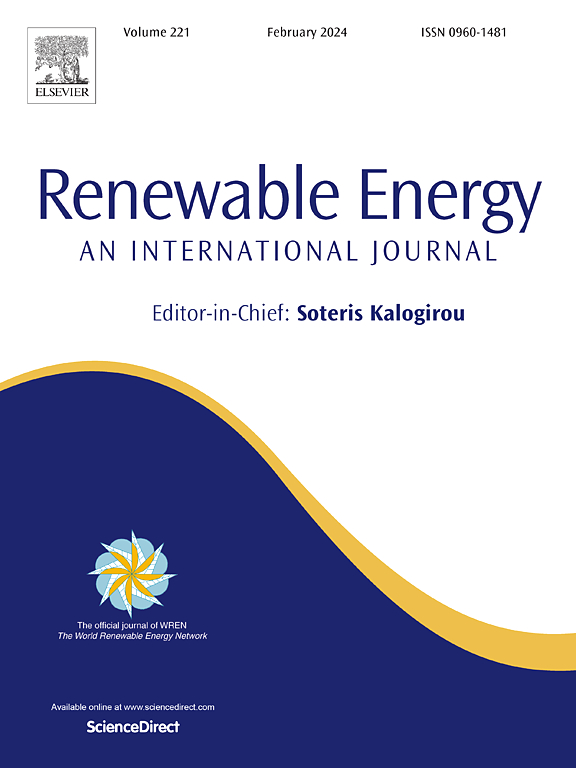Scaling between areas of electrolyzer electrodes and solar modules achieving over 15 % solar to hydrogen conversion efficiency: Silicon and CIGS
IF 9
1区 工程技术
Q1 ENERGY & FUELS
引用次数: 0
Abstract
This study aims to maximize the efficiency of solar-to-hydrogen generation systems by optimizing the relative areas of the electrodes and solar modules. The core objective is to identify the optimal balance between these components to achieve the highest energy conversion efficiency. We conducted a series of experiments using lab-scale silicon and copper indium gallium selenide solar modules, along with platinum on carbon and ruthenium dioxide-based electrocatalyst electrodes. By increasing the area of the water-splitting electrodes while decreasing the solar module area, we achieved solar-to-hydrogen conversion efficiencies of 12.30 % for the silicon module and 15.34 % for the copper indium gallium selenide module. Our findings indicate that the optimal ratio between the electrode and solar module areas depends on the type of solar module. To better understand this relationship, we analyzed the normalized current-voltage characteristics of the solar modules, which allowed us to evaluate the system's potential to reach the maximum theoretical efficiency. Additionally, we introduce the concept of coupling effectiveness to quantify how efficiently the integrated system utilizes captured solar energy. In this study, we achieved a coupling effectiveness of 85.7 %, which is the highest value reported to date for similar systems.
电解槽电极和太阳能模块之间的缩放实现超过15%的太阳能到氢转换效率:硅和CIGS
本研究旨在通过优化电极和太阳能模块的相关区域,最大限度地提高太阳能制氢系统的效率。核心目标是确定这些组件之间的最佳平衡,以实现最高的能量转换效率。我们进行了一系列实验,使用实验室规模的硅和铜铟镓硒化太阳能模块,以及铂在碳和二氧化钌基电催化剂电极上。通过增加水分解电极的面积,同时减小太阳能组件的面积,我们实现了硅组件12.30%和铜铟镓硒化组件15.34%的太阳能-氢转换效率。我们的研究结果表明,电极和太阳能组件面积之间的最佳比例取决于太阳能组件的类型。为了更好地理解这种关系,我们分析了太阳能组件的归一化电流电压特性,这使我们能够评估系统达到最大理论效率的潜力。此外,我们引入了耦合效率的概念来量化集成系统利用捕获的太阳能的效率。在这项研究中,我们实现了85.7%的耦合效率,这是迄今为止报道的类似系统的最高值。
本文章由计算机程序翻译,如有差异,请以英文原文为准。
求助全文
约1分钟内获得全文
求助全文
来源期刊

Renewable Energy
工程技术-能源与燃料
CiteScore
18.40
自引率
9.20%
发文量
1955
审稿时长
6.6 months
期刊介绍:
Renewable Energy journal is dedicated to advancing knowledge and disseminating insights on various topics and technologies within renewable energy systems and components. Our mission is to support researchers, engineers, economists, manufacturers, NGOs, associations, and societies in staying updated on new developments in their respective fields and applying alternative energy solutions to current practices.
As an international, multidisciplinary journal in renewable energy engineering and research, we strive to be a premier peer-reviewed platform and a trusted source of original research and reviews in the field of renewable energy. Join us in our endeavor to drive innovation and progress in sustainable energy solutions.
 求助内容:
求助内容: 应助结果提醒方式:
应助结果提醒方式:


